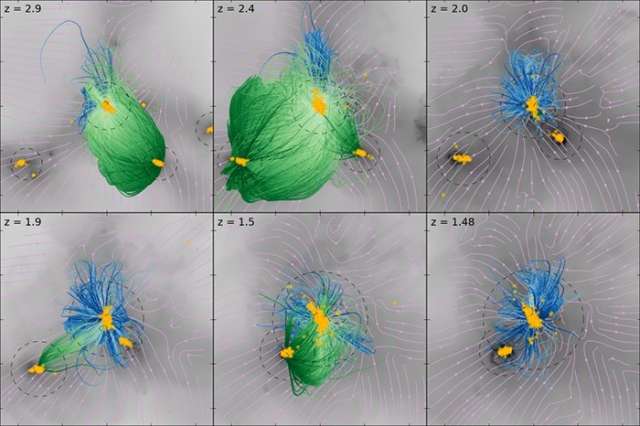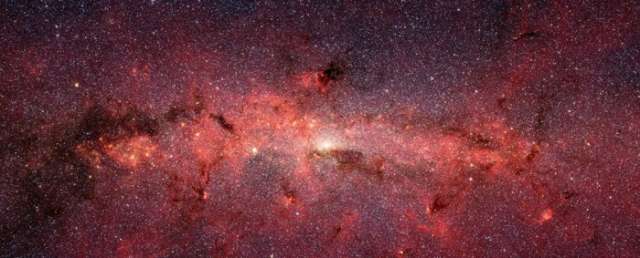The models run by the team of astrophysicists from Northwestern University showed supernova explosions could eject vast amounts of gas beyond their own galaxies, with atoms transported from one galaxy to another via powerful winds.
"Given how much of the matter out of which we formed may have come from other galaxies, we could consider ourselves space travellers or extragalactic immigrants," says lead researcher Daniel Anglés-Alcázar.
"It is likely that much of the Milky Way's matter was in other galaxies before it was kicked out by a powerful wind, travelled across intergalactic space and eventually found its new home in the Milky Way."

Although these intergalactic winds are thought to be very fast – maybe several hundred kilometres or miles per second – the vast distances involved means this atom sharing would've taken place over billions of years.
Using the FIRE (Feedback In Realistic Environments) simulation system, the team was able to build realistic 3D models of galaxies stretching from just after the Big Bang right up to the present day.
Advanced algorithms were then used to tap into the data generated to work out where galaxies were picking up all their matter from. It appears that large volumes of gas flow from smaller galaxies to larger ones, like the Milky Way.
While larger galaxies have more matter to begin with, they're also harder to escape for travelling atoms, which is why the flow usually goes towards the bigger galaxies.
We already knew that material can move between galaxies, we just didn't know how much. Ultimately, the atoms in a large galaxy, like those around us, could have originally come from up to a million light-years away, the new research suggests.
"This study transforms our understanding of how galaxies formed from the Big Bang," says one of the researchers, Claude-André Faucher-Giguère.
Galaxies are collections of stars bound together and orbiting a common mass, usually a supermassive black hole, but right after the Big Bang almost 14 billion years ago there were no stars and no galaxies – just a uniform gas.
Tiny variations in the flow of the gas and the pull of gravity gradually formed the stars and the galaxies in the Universe we know today, but the new findings give us a fresh line of research in understanding galaxy formation, according to the scientists.
"Our origins are much less local than we previously thought," says Faucher-Giguère. "This study gives us a sense of how things around us are connected to distant objects in the sky."
More about: #Galaxy
















































